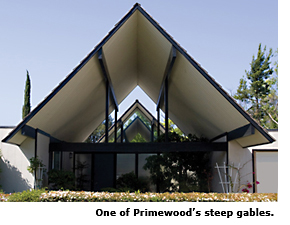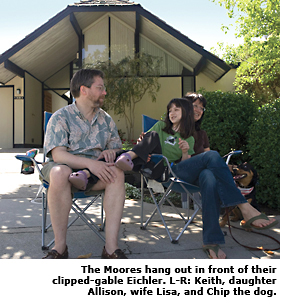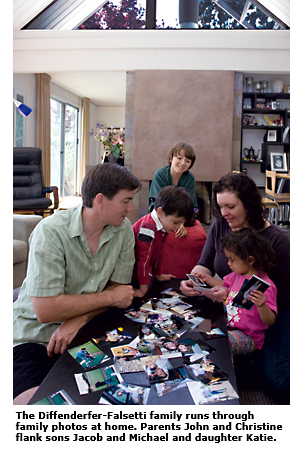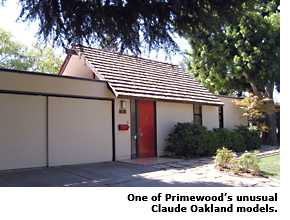The Storybook Eichlers of Primewood - Sunnyvale

Next time you're feeling down, consider a trip to Primewood. "People have said it's one of Eichler's most beautiful and best-maintained neighborhoods," Gary Bronstein says, with justifiable pride since, as an original owner and 40-year resident, he's helped make it so.
Primewood, built from 1969 to 1972, has always been a special place. But over the past few years friendships have tightened and neighbors grown more close, thanks to an influx of young families and to a young boy whose joyous spirit proved inspirational.
In Primewood, the softly curving streets, the trees that arch overhead, and the utility lines that do not, because they are buried, immediately evoke a sense of peace.
The handful of streets and shallow courts that make up the compact, 35-home Sunnyvale neighborhood are largely free of traffic because there are only two ways into the neighborhood, and few visitors except neighbors and friends—or the rare tourist seeking respite.

As a result, kids play tennis on the street, baseball, Wiffle ball, and soccer, and wiggle with hula hoops. Dad Keith Moore will on occasion set out an orange cone to alert drivers that kids are at play.
And kids aren't the only ones who use the roads for recreation. "We've had some pretty darn good block parties," says Mark Papamarcos, who is also a papa and Moore's neighbor.
The houses, too, add to the neighborhood's special feeling. These are late Eichlers, built after Eichler Homes collapsed in bankruptcy and Joe was running a successor firm, J.L. Eichler Associates. Eichlers had been steadily growing in size over the years, and these are among the largest models, most of them 2,000 to 2,300 square feet, typically four bedrooms, some five. Residents appreciate their spacious walk-in pantries.
But it's not the size so much as the poetry of the homes that makes them special. Unlike some Eichler neighborhoods, whose flat-roofed homes and off-putting facades can appear otherworldly, Primewood suggests instead a fairytale village. Its homes illustrate not the abstraction that's inherent in modern architecture, but its playfulness.

At Primewood, instead of flat roofs, there are steep gables filled with glass. What could be more a symbol of 'home sweet home' than this sheltering, exaggerated gable?
Steep gables often suggest Swiss chalets. But in the hands of Eichler's witty architects, Jones & Emmons and Claude Oakland Associates, here they evoke another species of architecture—the mirrored carnival funhouse.
Peer through the clerestory glass and what do you see? You see a second gable roof identical to the first just past the home's roofless atrium. But beyond that, is there a third roof too? It sure looks that way. Are we seeing roof after roof after roof, receding into infinite space?
Not really—just a reflection in the glass. But the impression lingers. Adding to the carnival atmosphere is the neighborhood's predilection for painting front doors circus-like colors. "Our door is Barney-like purple," says Marie Papamarcos, Mark's daughter.
The steep gable isn't the only model that has fun by doubling up its roofline. There's also a curious model that consists of two steep, side-gabled, shake-roofed pavilions. The home suggests a pair of beach cottages. Some, with outrigger-like ridge beams, go even further, evoking Tiki huts.
Thanks to its natural redwood siding, the twin-cottage home owned by Phil Smith and Marcia Lubecki resembles another exotic home type entirely—a mountain cabin. By the mid-1960s Eichler was using swirl-pattern, roughly sawn vertical wood siding, both inside and out, which adds a rustic feel, nowhere more effectively than in Smith and Lubecki's house.

There are other Storybook touches throughout the neighborhood as well. International Style modernism prided itself on avoiding all references to historic precedents. Claude Oakland had fewer such scruples. Keith and Lisa Moore's home sports a 'clipped gable,' otherwise known as a 'jerkinhead,' that recalls 16th century English cottages.
Visitors who surmise from the neighborhood's picturesque air that it must be a friendly place may rest assured. The facades do not lie.




